The best headphones for cycling enable you to enjoy your favourite music on the bike, without putting you in danger from traffic and other hazards.
While the question of whether cycling with headphones is dangerous is hotly debated, there are many products designed specifically for listening to music while riding or running.
They should make listening to your favourite music or the BikeRadar podcast while on the move a seamless, safe experience that enhances your ride.
Bone conduction and open-ear air conduction headphones are designed to keep your ear canals unobstructed, ensuring you remain aware of approaching cars, pedestrians and other cyclists. These will always be a better choice than in-ear buds if your priority is road safety.
The best cycling headphones combine audiophile-level sonic performance with a stable fit, so they stay in place throughout the rigours of road cycling, commuting, gravel riding or even mountain biking.
They should also fit comfortably without being obstructed by cycling glasses or helmets.
Many cycling headphones will also have Bluetooth connectivity, enough battery life to accompany you on big days out on the bike and the ability to withstand wet and windy conditions.
Most will enable you to answer phone calls on the move, control your music without reaching for your phone and come accompanied by apps to tailor the EQ to your preferences.
Our expert testers, Gary Walker and Warren Rossiter, used their decades of experience in cycling and hi-fi journalism to put some of the leading wireless cycling headphones through their paces.
SQUIRREL_PLAYLIST_10111574
To find out more about the practicalities of cycling with headphones and the different types, read our buyer’s guide to cycling headphones.
Editor's note: we updated our best headphones for cycling list on 10 October, 2024, with our latest cycling headphones reviews. We also updated our top picks and buyer's guide.
What are the best headphones for cycling?
Sony LinkBuds wireless headphones

- £149 / $149 / €179 as tested
- Pros: Supreme sound quality; advanced features; adjustable fit
- Cons: Short battery life; struggle with extreme traffic noise
The Sony LinkBuds are a superb set of wireless headphones for cyclists from the brand that produced the first set of in-ear headphones in 1982.
They deliver astonishingly detailed and widescreen sound, belying their tiny size and the weight of 4g per bud.
The open centre of the figure-of-eight buds allows ambient noise to reach your eardrums, while small fins on the four sizes of fitting supporters help them stay in place during vigorous activity.
The wide range of features, well-considered app and exceptional sound quality are class-leading, and the price is competitive considering what’s on offer.
Sony also deserves credit for the lack of plastic involved in the whole package.
Only a short 5.5-hour battery life and difficulty competing with the loudest traffic noise appear in the negatives column.
SQUIRREL_13077156
Suunto Wing bone conduction headphones

- £169 / $199
- Pros: Bone-conduction design enables traffic awareness; premium build; good sound quality; LED lights
- Cons: Large charging unit; small buttons tricky to press on the move
Designed by Finnish smartwatch brand Suunto, the Wing is among the best bone-conduction headphones money can buy.
The sleek design ensures a stable fit and gives you uninterrupted awareness of traffic noise around you.
Build quality is excellent and the LED lights add to the Wing’s road-safety credentials.
Our tester Gary was pleasantly surprised by the audio performance, which leaves most bone conduction rivals in the shade and competes with many in-ear headphones.
With a 10-hour battery life, IP67 waterproof rating and dedicated outside mode, there are few headphone designs better suited to cycling than the Wing.
The only minor negatives during testing were the small buttons, which were tricky to press with gloves on, and the relatively large – if very cool-looking – charging unit.
SQUIRREL_13090829
EarFun Free Pro 3 earbuds

- £63.99
- Pros: Impressive sound for the price; ear tips and hooks to tailor fit; smart features
- Cons: Slightly prominent bass; buds block ear canals
The bargain-priced EarFun Pro buds provide an enjoyable, largely well-balanced listen that backs up the Chinese brand’s belief that “premium sound can be heard on a budget”.
That audio performance and the list of usable features sees them eclipse some more expensive cycling headphones.
There are noise-cancelling and ambient modes and a handy ‘Find my headphones’ function that was useful on the one occasion they fell from Gary’s ears during testing.
The buds have an IPX-5 waterproof rating, they weigh only 5g each and battery life is a decent 7.5 hours.
EarFun’s headphones don’t top any one category and they’re not designed specifically for cycling, but if you’re looking for great all-rounders at an affordable price, look no further.
SQUIRREL_13124034
Google Pixel Buds Pro 2

- £219 / $229 / €249 / AU$379
- Pros: Full, balanced and widescreen sound; very comfortable; advanced features
- Cons: High price; Apple users can't download Pixel Buds app
Google's new Pixel Buds Pro 2 headphones are a big improvement on the previous version from the Californian tech giant.
Despite their diminutive size and weight, the sound from the 11mm drivers is full, clear and balanced – with the separation of instruments and top-end detail making them an enlivening listen.
Transparency mode ensures you're aware of traffic noise, and the fit and comfort both proved excellent throughout our reviewer Gary Walker's testing.
Features such as Hearing Wellness and Find My Device are useful, although Apple users won't be able to download the Pixel Buds app and access them. The price is among the highest of the cycling headphones BikeRadar has tested, too.
SQUIRREL_13134309
Shokz OpenFit wireless earbuds
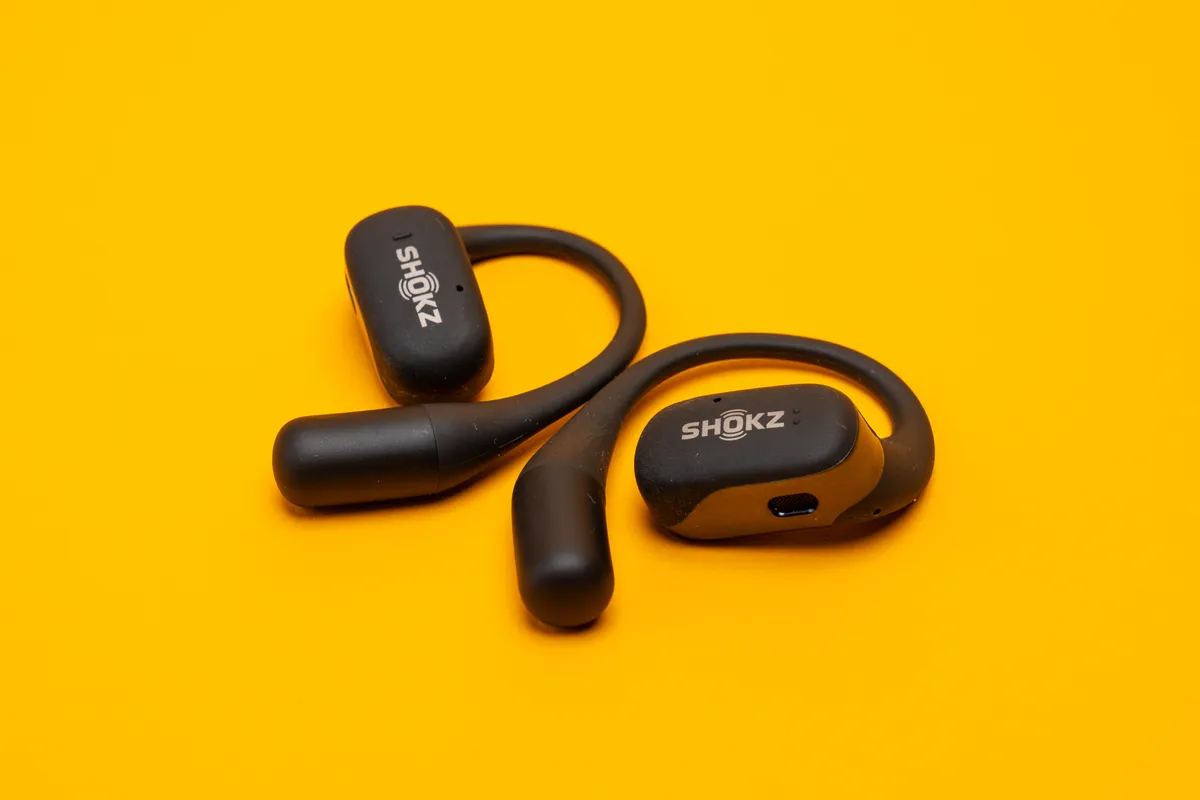
- £179 / $179.95 / €199 / AU$289 as tested
- Pros: Full, detailed sound; secure fit; good battery life
- Cons: Some bass distortion; high price
The Shokz OpenFit buds wowed our tester with their innovative design, brilliantly balanced audio performance and reliable, solid fit.
These are air-conduction earbuds that sit just above the entrance to your ear canal, using DirectPitch technology to project the sound to your eardrums. This means their audiophile-approved sound doesn’t come at the expense of road safety.
Our tester found listening to his favourite music with the OpenFits an addictive experience.
They’re comfortable, with a confidence-inspiring fit for long-distance rides or runs, play nicely with helmets and glasses, and battery life is a more than reasonable seven hours.
The bass response is full and punchy, although it suffered from a touch of flabby distortion during testing.
SQUIRREL_13077159
Shokz OpenMove headphones
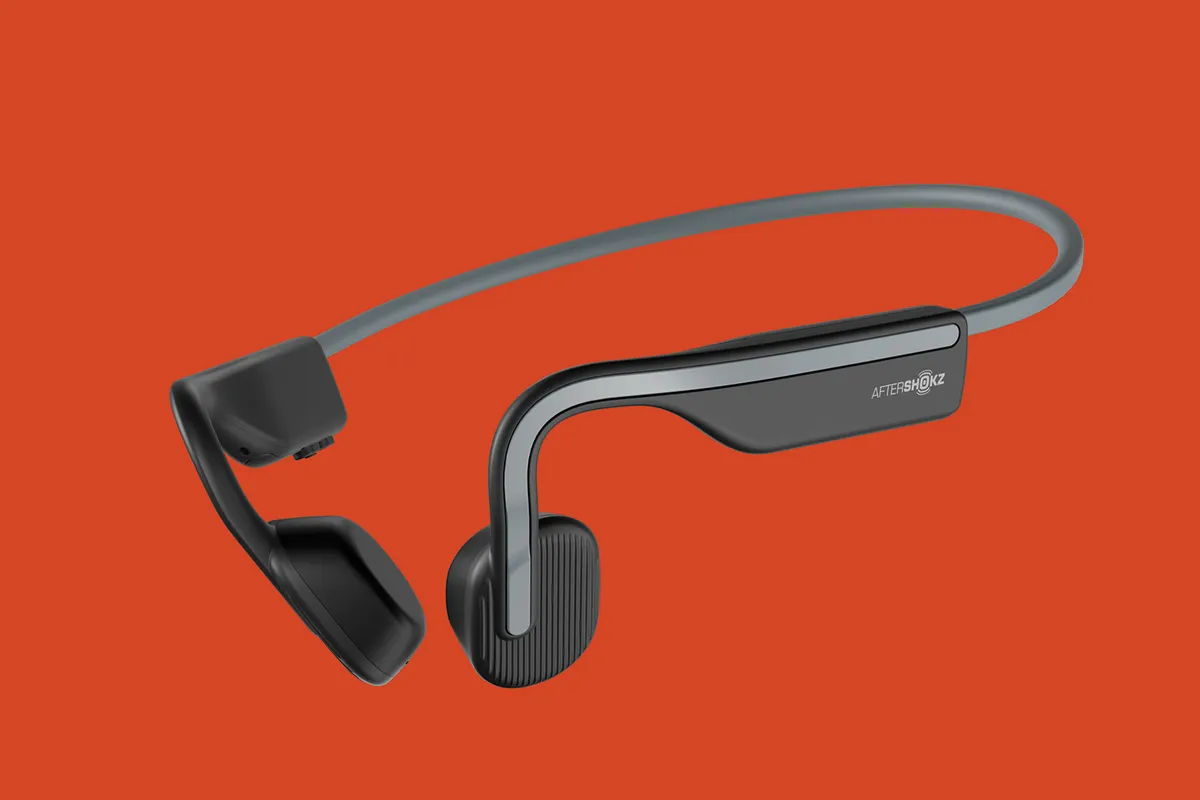
- £80 / $100 / €90 as tested
- Pros: Excellent fit; clarity of sound
- Cons: Louder wind noise hampers performance
We tested the OpenMove bone conduction headphones back when Shokz was known as AfterShokz and they have deservedly secured a place on our best list.
Resting on your cheekbones like their sibling OpenRuns, these seventh-generation AterShokz headphones have a more modest price tag.
Despite that budget price point, they aced their audio exam during testing, felt comfortable and stayed out of the way of our reviewer’s helmet and glasses.
Battery life is reasonable at six hours, although they’re not fully waterproof and when speed picked up, they began to lose the battle with wind noise.
SQUIRREL_13093844
Shokz OpenRun headphones
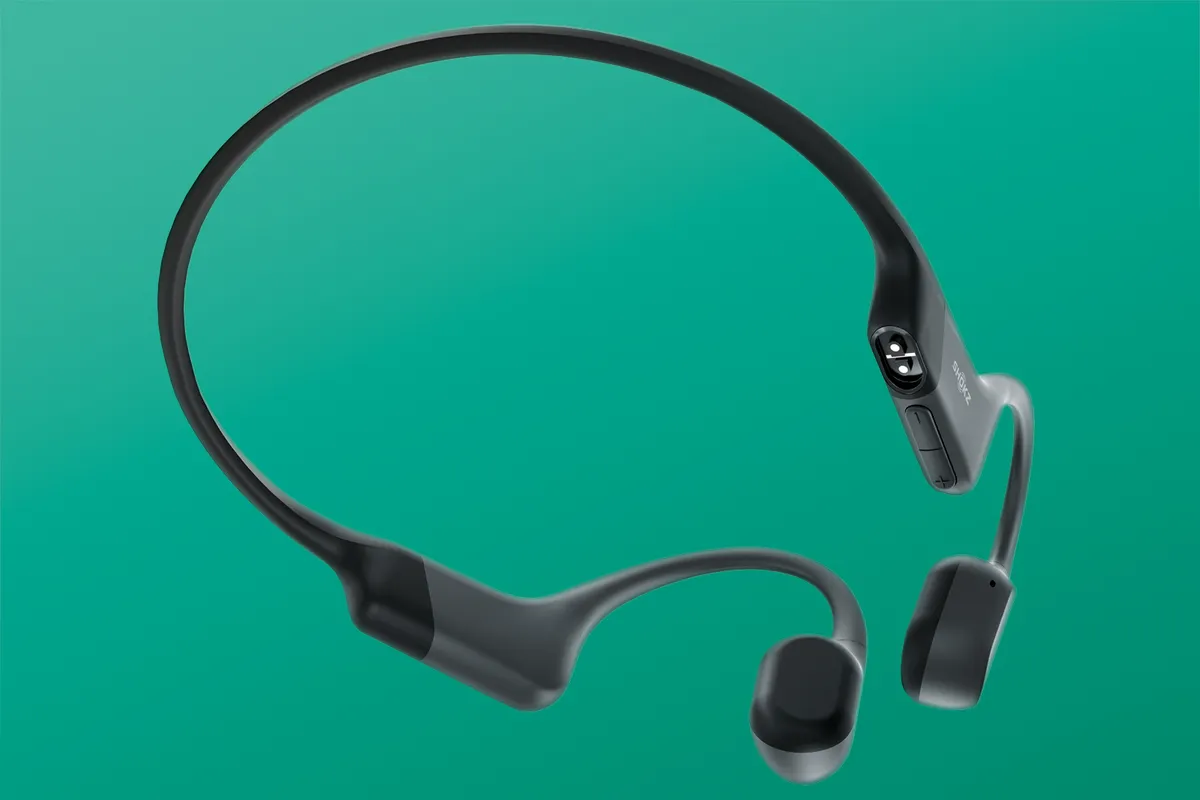
- £130 / $130 / €140 as tested
- Pros: Rain-proof; good sound quality; long battery life
- Cons: Wind noise can affect sound quality
Shokz is something of an expert in bone-conduction headphones, and the OpenRuns are a top choice.
The PremiumPitch 2.0+ audio technology treated our tester to an impressively punchy listening experience and because the headphones sit on your cheekbones, traffic noise is received loud and clear.
The sprung-titanium band of the OpenRun headphones sits around the nape of your neck, well out of the way of your helmet or glasses. An IP67 waterproof rating will see them survive the inevitable downpours you encounter.
An eight-hour battery life should get you through all but the longest rides, and there’s a handy fast-charge function.
They didn’t cope brilliantly with louder ambient noise, though, but this is a common issue with bone conduction and open-ear headphones.
SQUIRREL_13124041
Also consider…
The following headphones for cycling scored fewer than four stars out of five, but could still be worth considering if they meet your needs.
Jabra Elite 7 Active

- £169.99 / $179.99 / €179.99 as tested
- Pros: Build quality; sound customisation; good app; decent battery life
- Cons: Fit issues; not quite top-tier sound
Jabra’s wireless in-ear headphones for cyclists and runners eschew ear hooks or fins to keep them in place, instead relying on the brand’s ShakeGrip tech.
That won’t be a problem for many, but it was a flaw for our tester, who couldn’t get a consistent secure fit.
If they do fit your ears, you’ll be getting a great pair of headphones.
A well-developed app offers a wealth of customisation options, build quality is first-rate, the battery life is ample and they sound as good as most in-ear rivals at this price point.
However, even better sound quality and more universal fit options are available elsewhere, so they narrowly miss out on a place in our best list.
SQUIRREL_13124042
Sennheiser Momentum Sport

- £279.99 / $329.95 / €329.90
- Pros: Powerful, balanced sound; fit options; feature-ich
- Cons: High price; niche fitness-tracking functionality; charging issues with fins in place
The USP of the Sennheiser Momentum Sport headphones is their ability to track your heart rate and temperature using biometric sensors in the left earbud.
However, to get the best out of that functionality, you ideally need a Polar smartwatch – and if you already have such a device, you already have the fitness-tracking functions.
The inclusion of this arguably unnecessary tech results in an intimidatingly high price, which is a shame because sound quality from the 10mm transducers is superbly full, balanced and detailed.
Tester Gary reported that the buds stayed safely in place throughout testing, thanks to a wide range of fit adaptors – and the wealth of features Sennheiser has incorporated is impressive.
Ultimately, there’s a lot to like, but the value proposition when compared to the best headphones for cycling makes the Momentum Sports difficult to recommend.
SQUIRREL_13102866
OpenRock Pro air conduction headphones
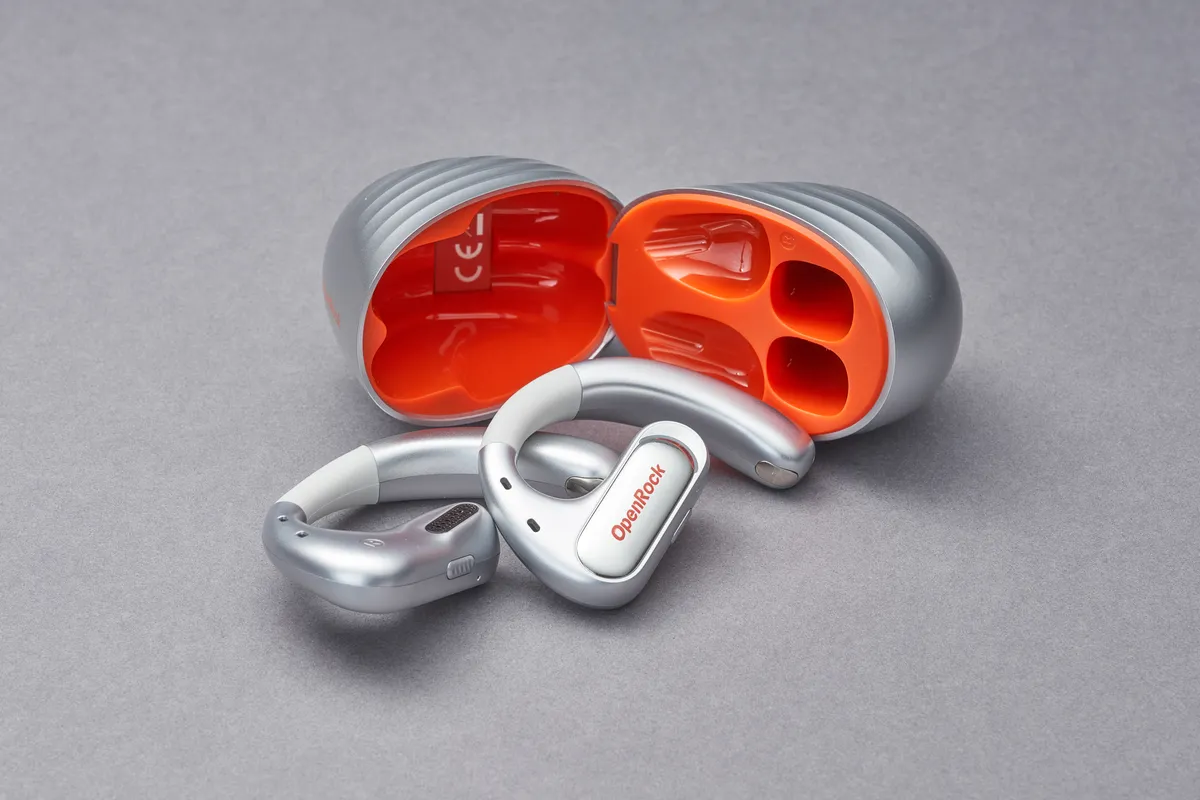
- £129 / $129 as tested
- Pros: Leave ear canals unrestricted; huge battery life; cheaper than rivals
- Cons: Unrefined sound; no app; weak bass
The OpenRock Pro headphones share similarities in both name and approach with the highly rated Shokz OpenFit headphones.
Coming in around £50 cheaper, their main strength is a 19-hour battery life that’ll get you through King Gizzard & The Lizard Wizard’s full 24-album catalogue.
Sound quality is mid-table, with the bass coming under fire from louder traffic and wind noise, and you feel the lower price in the sub-premium finish.
The rigid construction makes them less comfortable than rivals, too, but if you’re looking for a robust, cheaper alternative to the Shokz OpenFits, they could be worth trying.
SQUIRREL_13124045
How we tested cycling headphones
Reviewers Gary Walker and Warren Rossiter have decades of cycling and music journalism experience between them.
Warren has tested hundreds, if not thousands, of bikes and is a lifelong music obsessive. Gary has reviewed countless headphones, guitars and turntables in his career as a music and hi-fi journalist, working for titles including Long Live Vinyl, Guitar.com and TechRadar before joining BikeRadar.
Our two audio experts put that experience to use to rigorously test the best headphones for cycling.
The headphones were assessed for their sound quality, fit, Bluetooth connectivity and battery life, while also ensuring they don’t put you in danger by drowning out traffic and other ambient noise.
Testing took place on a series of commuting, road and gravel rides, taking in some typically wet and windy UK conditions. Half-marathon addict Gary also utilised his passion for running to pound the pavements and see how each contender fared as multi-sport headphones.
Cycling headphones buyer’s guide
Is it safe to wear headphones while cycling?
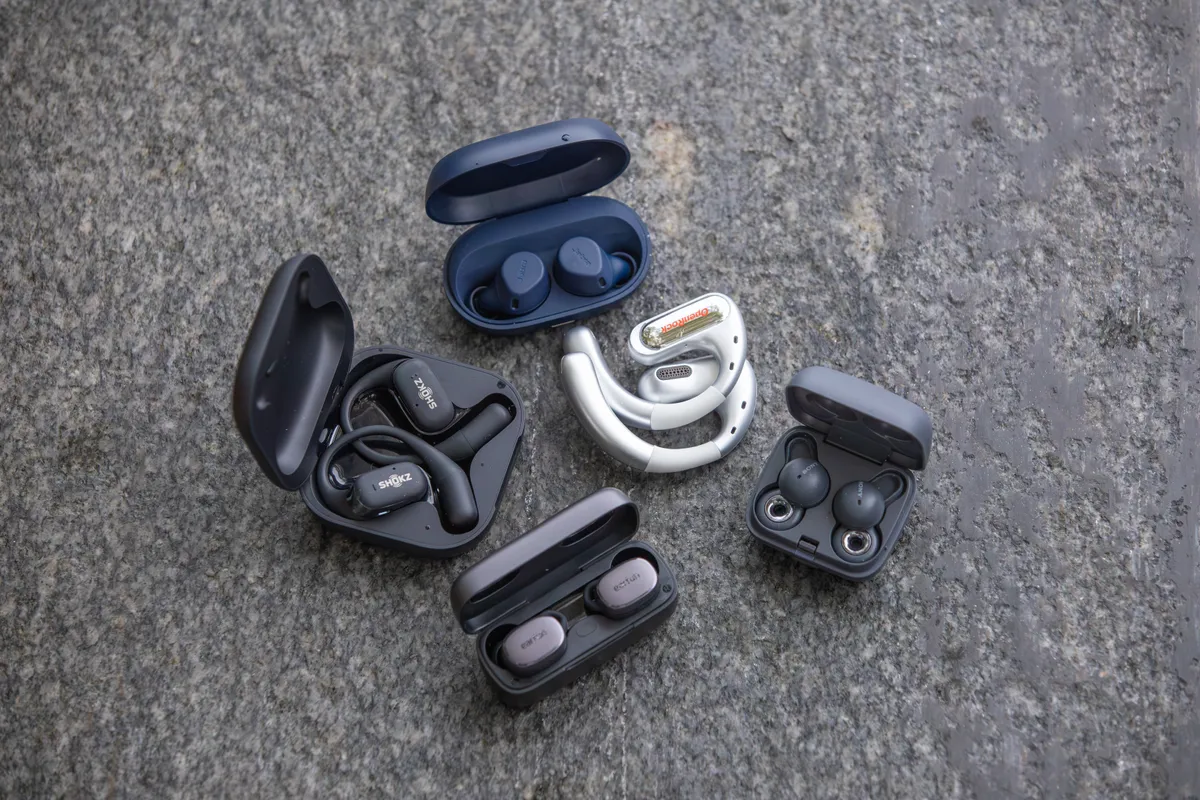
There has been much debate over this topic, with those who argue against cycling with headphones claiming it reduces your ability to hear approaching vehicles, pedestrians and other cyclists.
Some also claim concentration may be diminished by listening to music while cycling, with a study by Dutch researchers citing restricted auditory perception.
There is also the issue of reduced awareness of mechanicals that may develop with your bike.
The 2018 E-Survey of Road Users’ Attitudes in 60 countries found 56 per cent of participants would support a ban on the use of headphones while cycling.

However, little evidence has been produced to point to a higher proportion of incidents involving cyclists wearing headphones.
It’s also important to make a distinction between over-ear and noise-cancelling headphones, and bone conduction and air conduction headphones that don’t obstruct your ear canals or use a microphone to pick up ambient noise.
Some cyclists choose to use only one earbud to increase their awareness.
Research by Dr Katrina Jungnickel and Dr Rachel Aldred even suggests listening to music helps cyclists form a ‘sensory strategy’ that could contribute to heightened road safety in a busy urban environment.
Is it legal to wear headphones while cycling?
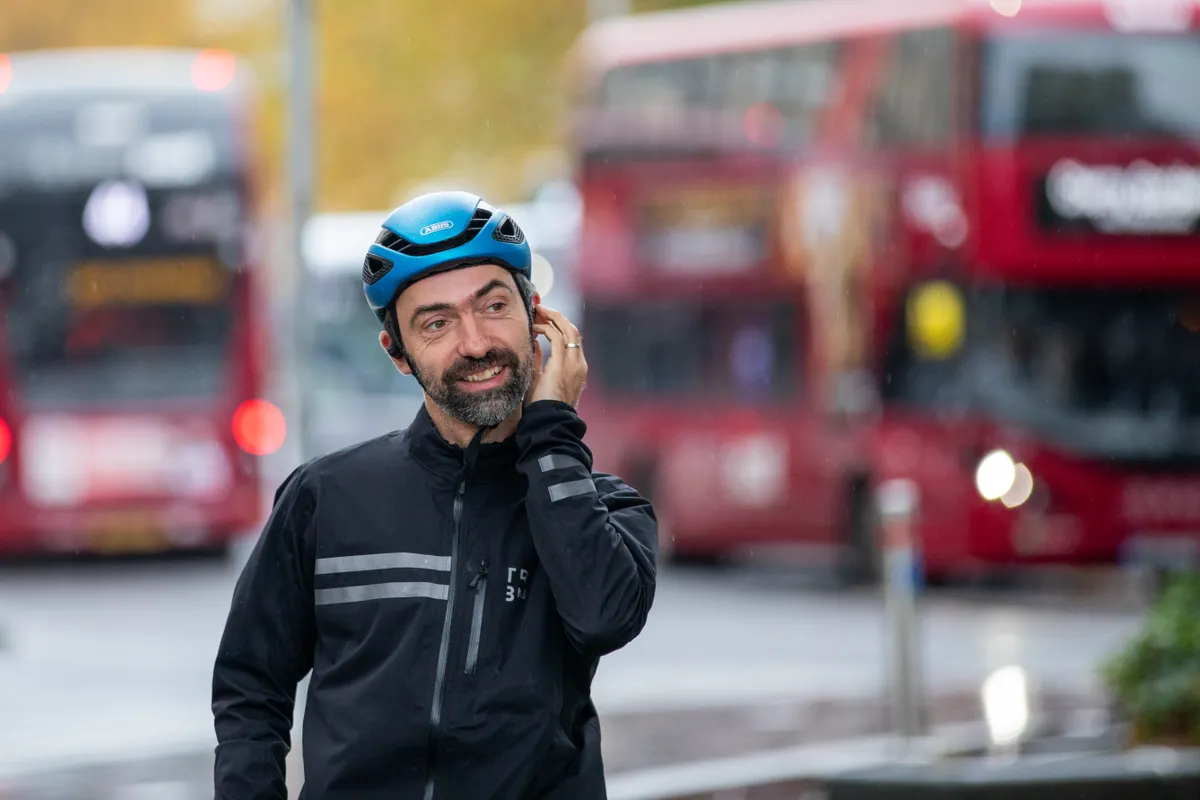
Cycling with headphones is not illegal in the UK, although riding without due care and attention is a criminal offence.
Some European countries, such as France and Spain, prohibit riding with headphones, and you can be hit with a hefty fine if you do so.
In the USA, the law varies from state to state, with some outlawing riding with headphones altogether and others making it illegal to ride with both ears covered.
Before buying a set of the best headphones for cycling, you should check the law where you live.
Should you get on-ear, in-ear or bone conduction headphones for cycling?

When choosing a pair of headphones for cycling, safety is the most important factor.
For this reason, on-ear or traditional in-ear headphones are rarely a good option because they reduce your ability to hear noise from the world around you.
However, there are now many bone conduction and open-ear air conduction headphones on the market that leave your ear canal free to receive ambient noise.
Bone conduction headphones work by transmitting sound waves through the bones of your skull, while air conduction headphones transmit the sound a short distance through the air to your ear drum.
Bone conduction designs are less likely to cause hearing damage, auditory fatigue and ear hygiene issues.
However, because they leave your ears entirely open, they may struggle to compete with louder ambient noise and deliver a rich, balanced listening experience when you’re cycling.

Some in-ear air conduction headphones, such as the Sony LinkBuds, have been developed to allow the sound of traffic to pass through to your eardrums. Others, such as the Sennheiser Momentum Sport, Google Pixel Buds Pro 2 and Jabra Elite 7 Active, employ an in-built microphone to pick up ambient noise.
Whether you choose air conduction or bone conduction headphones, be sure to opt for something with a secure fit – ear hooks that loop around the top of your ear, or fins that sit beneath your ear grooves, help here.
Most bone conduction headphones are more likely to stay in place throughout vigorous efforts, with some using a band that fits around your neck for a secure fit.
What are the best headphones for Zwift and indoor training?
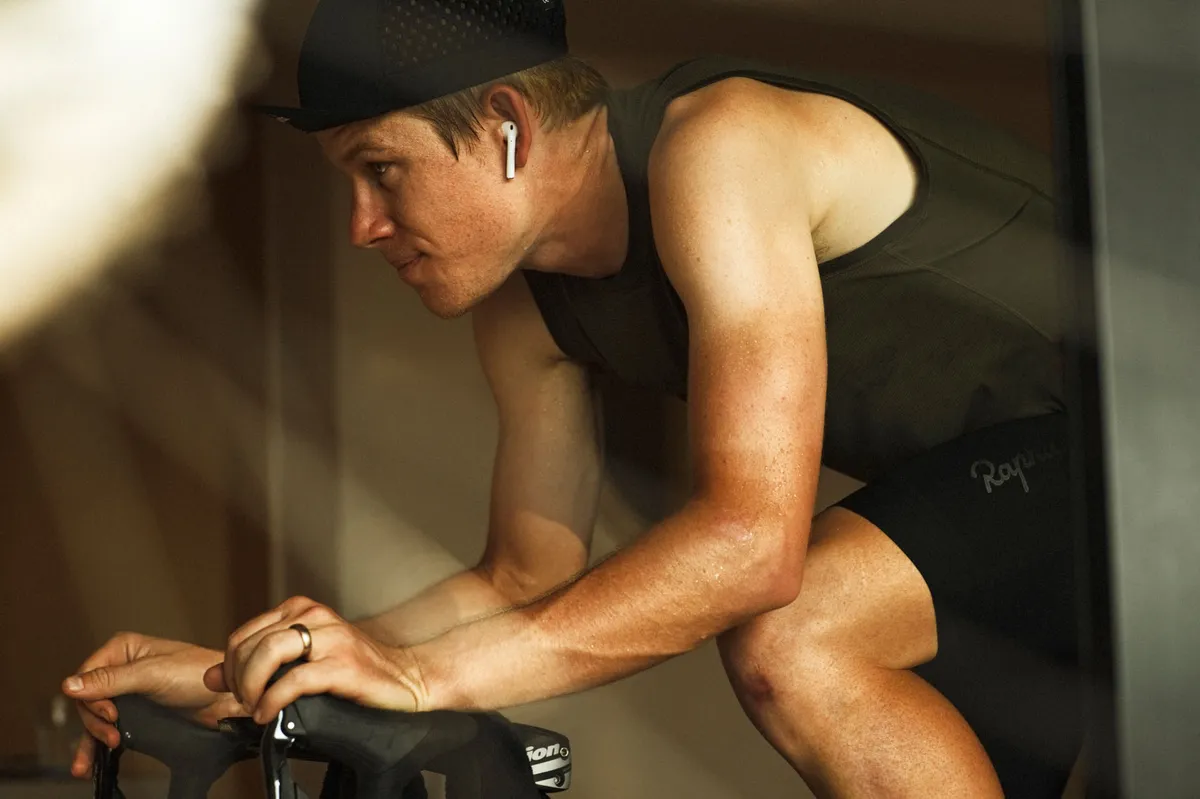
If you already have a set of headphones for cycling outdoors, these will almost certainly be fine for indoor training.
Cycling indoors is less dynamic than outdoor cycling, so you’ll have fewer problems with headphone security.
However, cycling indoors can be very sweaty. If you’re a profuse perspirer and find it hard to keep headphones in place while riding outside, the issue will be exacerbated indoors.
You could consider placing a sweatband over your ears, though we’d argue that points to a more fundamental issue with the headphones and suggest considering another option.
You probably won’t be wearing a helmet while indoor training. This means you can wear a pair of over-ear headphones for the best audio quality possible.
Some riders like to chat, usually on a Discord server, while grinding away through a turbo session or Zwift racing. Cycling chatterboxes may choose gaming headphones with a higher-quality microphone.
Another option would be to pair your regular headphones with an external USB microphone. These can be purchased inexpensively from the likes of Amazon and will be more than good enough for gassing away while racing.
Finally, if you have accommodating housemates and neighbours, you could always go full spin class studio and blare out inspiring techno to get you through your next Zwift FTP test.
Why you can trust BikeRadar
BikeRadar has been an authority on bikes and cycling tech since its inception in 2007, delivering the world’s best riding advice.
We have experts testing all types of bikes, parts, clothing and accessories, from road, mountain and gravel bikes to commuting, bikepacking and electric bikes.
Our reviews are always editorially independent – with no exceptions. Our reviewers comprehensively test all products in the real world, always reflecting on performance, value and the wider market when delivering their verdicts and review ratings.
We have more than 15,000 product reviews available at your fingertips, as well as expert buying, maintenance, training, skills, health and fitness advice.
Our annual Bike of the Year test is an industry benchmark and the BikeRadar team consists of some of the most experienced riders and testers in the business.
